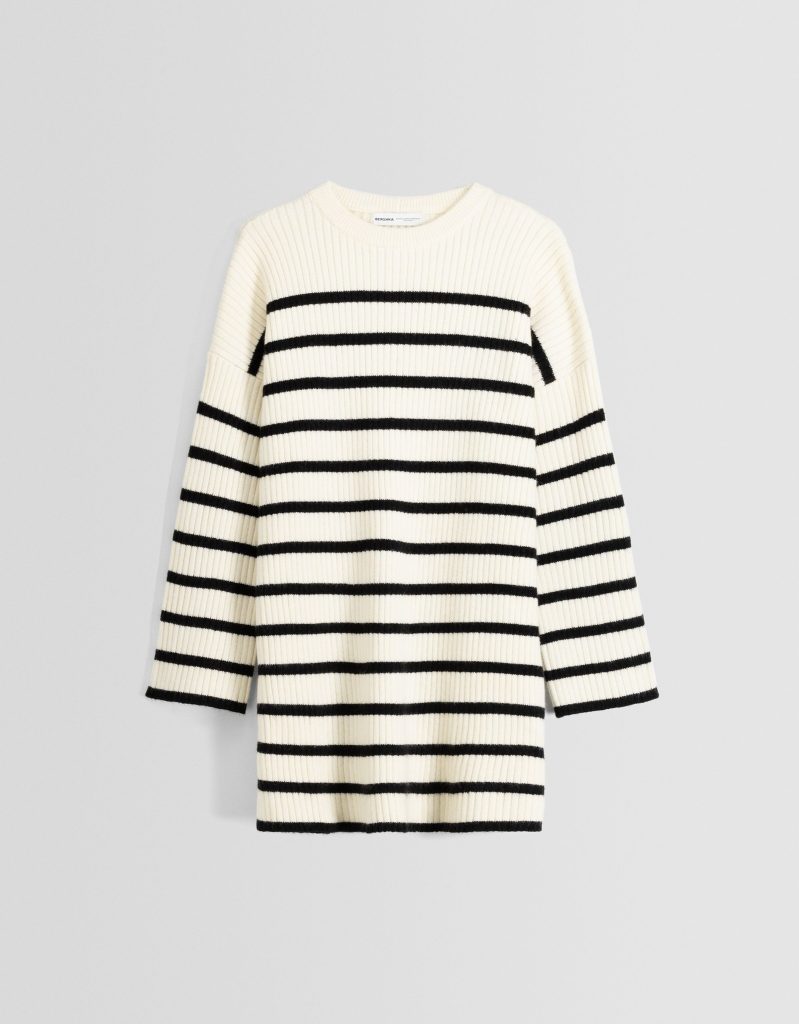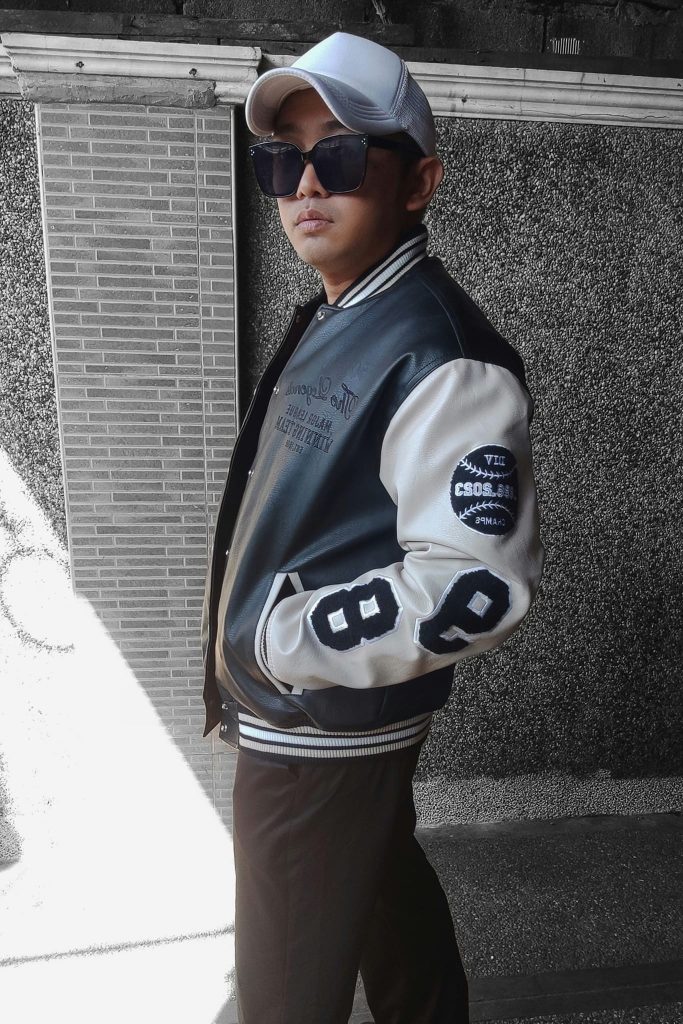- Home
- Fashion & Accessories
- Bershka: Redefining Fashion with Trendsetting Styles

Bershka: Redefining Fashion with Trendsetting Styles
Introduction Bershka
Bershka is a Spanish fashion retailer specializing in trendy and affordable clothing for young men and women. Founded in 1998, it is part of the Inditex Group, which also owns popular brands like Zara, Massimo Dutti, and Pull&Bear.
Bershka has established itself as a leading player in the fast-fashion industry by catering to the needs and desires of a young and fashion-conscious audience.
Additionally, it’s worth noting that Bershka is committed to sustainability efforts. The company has implemented various initiatives to reduce its environmental impact, such as using recycled materials in its clothing and reducing its carbon footprint.
Would you like to know more about Bershka’s specific products, latest collections, or any other aspect of the brand?
History of Bershka
The History of Bershka: From Trendy Beginnings to Global Fashion Powerhouse
1998: Bershka emerges as a fresh store and “fast-fashion” concept under the umbrella of the Inditex Group, alongside renowned brands like Zara. It targets a young audience with its trendy and affordable clothing.
Early 2000s: Bershka experiences rapid international expansion, opening stores across Europe, Asia, and Latin America. It quickly gains recognition for its ability to swiftly adapt to evolving trends and offer them at competitive prices.
Mid-2000s: Bershka embraces e-commerce by launching its online store, providing customers with convenient access to its fashion offerings. The brand also starts collaborating with celebrities and influencers, further solidifying its presence in the fashion world.
2010s: Bershka continues its global expansion, reaching new markets in Africa and the Middle East. It also becomes known for its commitment to sustainability, implementing initiatives to reduce its environmental impact.
2020s: Today, Bershka boasts over 973 stores in 75 countries, solidifying its position as a leading player in the fast-fashion industry. Its user-friendly online store and mobile app ensure its collections are readily accessible to a global audience.
Bershka’s journey from a trendy startup to a global fashion powerhouse serves as an inspiration for aspiring brands. Its ability to adapt, innovate, and connect with its target audience has secured its position as a major player in the ever-evolving world of fashion.
Bershka’s Fashion Philosophy
While Bershka doesn’t explicitly state a formal “Fashion Philosophy,” their brand identity and approach consistently reflect several key themes:
1. Trend-driven: Bershka’s core principle lies in offering the latest fashion trends at affordable prices. They constantly analyze global fashion trends and translate them into wearable pieces for their target audience. This focus on newness and immediacy keeps their collections fresh and relevant to the fashion-conscious consumer.
2. Accessible style: Bershka prioritizes making fashion accessible to everyone. They achieve this through their affordable pricing strategy, wide range of styles and sizes, and readily available online and physical stores. This inclusivity allows individuals to express their personal style without breaking the bank.
3. Individuality and self-expression: Bershka encourages individuality and self-expression through their diverse and versatile collections. Their clothing offers a range of styles, from casual streetwear to feminine dresses and bold statement pieces. This allows customers to mix and match, creating unique looks that reflect their individual personalities.
4. Youthful spirit: Bershka’s brand essence embodies a youthful spirit, characterized by energy, fun, and a sense of adventure. Their fashion reflects this spirit through vibrant colors, playful details, and comfortable silhouettes that cater to an active lifestyle.
5. Sustainability: While not the primary focus, Bershka is increasingly incorporating sustainable practices into their business model. They’re using recycled materials, reducing their carbon footprint, and promoting conscious consumerism. This demonstrates a growing awareness of their environmental responsibility and aligns with the values of a young generation that cares about the planet.
Bershka’s Fashion Philosophy can be summarized as offering trendy and affordable fashion that empowers individuals to express their unique style and embrace their youthful spirit, with a growing awareness of sustainability.
Unique Selling Propositions
Bershka stands out in the competitive fast-fashion market by offering a unique combination of factors that cater to its target audience of young and fashion-conscious individuals. Here are some of its key USPs:
1. Trend-driven: Bershka is known for its ability to quickly identify and offer the latest fashion trends. Their design teams are constantly analyzing global trends and translating them into wearable pieces, ensuring their collections are always fresh and relevant.
2. Affordable prices: Despite offering trendy styles, Bershka maintains competitive and affordable prices. This makes their fashion accessible to a wider audience, particularly young people who may be on a budget.
3. Diverse and versatile collections: Bershka offers a wide range of styles and sizes to cater to diverse tastes and body types. This allows individuals to find pieces that suit their personal style and fit them well.
4. Strong brand identity: Bershka has a clear and consistent brand identity that resonates with its target audience. They utilize vibrant visuals, social media engagement, and influencer collaborations to connect with their customers and build a strong brand community.
5. Convenient shopping experience: Bershka offers a seamless shopping experience through its online store and extensive network of physical stores. The user-friendly website and mobile app provide quick and easy access to their collections, while the physical stores offer an immersive shopping experience.
6. Commitment to sustainability: While not at the forefront, Bershka is increasingly incorporating sustainable practices into its operations. This includes using recycled materials, reducing their carbon footprint, and promoting conscious consumerism. This resonates with their environmentally conscious and socially responsible customers.
7. Youthful spirit: Bershka’s brand personality embodies a youthful spirit that is energetic, fun, and adventurous. This is reflected in their clothing styles, marketing campaigns, and overall brand image, creating a sense of excitement and connection with their target audience.
8. Constant innovation: Bershka constantly updates its collections and introduces new products to keep their offerings fresh and exciting. This keeps their customers engaged and encourages them to return for more.
9. Value for money: Bershka’s combination of trendy styles, affordability, and quality makes them a valuable option for young fashion consumers. This creates customer loyalty and encourages repeat purchases.
10. Global presence: Bershka’s extensive network of stores and online presence ensures their products are accessible to a global audience. This allows them to reach a wider customer base and expand their brand reach.
By focusing on these USPs, Bershka has established itself as a leading player in the fast-fashion industry. Their ability to cater to the specific needs and preferences of their target audience, combined with their commitment to innovation and affordability, has secured their position as a popular choice for young fashion enthusiasts around the world.
Bershka’s Target Audience
Bershka’s target audience can be broadly defined as follows:
Age: Primarily young adults between 18 and 35 years old. This age group is typically in their formative years, actively constructing their personal identities and exploring fashion trends.
Interests: Bershka targets individuals who are passionate about fashion, music, social media, and technology. They are interested in staying up-to-date with the latest trends and express their individuality through their clothing choices.
Values: Bershka’s target audience also values affordability, convenience, and social connection. They seek brands that offer trendy styles at reasonable prices and are readily available both online and in physical stores. Additionally, they are active on social media and appreciate brands that engage with them in a meaningful way.
Lifestyle: Bershka caters to young adults with an active and social lifestyle. They are often students, young professionals, or individuals involved in creative fields. They value experiences and socializing, and their clothing should reflect their active and dynamic lifestyle.
Psychographics: Bershka’s target audience is typically characterized as ambitious, independent, and confident. They are open to new experiences and trends and are not afraid to experiment with their style. They are also socially aware and increasingly conscious of the environmental impact of their fashion choices.
Understanding Bershka’s target audience enables the brand to develop effective marketing strategies, design relevant collections, and create a strong brand identity that resonates with their customers.
Collaborations and Collections
Bershka frequently engages in collaborations and launches diverse collections to keep their offerings fresh and appealing to their target audience. Here’s an overview:
- Art series: Collaborations with iconic artists like Jean-Michel Basquiat, Keith Haring, and others, featuring their artwork on clothing and accessories.
- Music: Partnerships with musicians like Tupac and Bizarrap, incorporating their music and style into collection themes.
- Cartoons: Collaborations with popular cartoon characters like The Powerpuff Girls, Astro Boy, and others, featuring them in playful designs.
- Movies and TV: Partnerships with popular films and TV shows like High School Musical and The Grinch, offering themed clothing and accessories.
- Anime: Collaborations with popular anime series like One Piece, featuring characters and designs on clothing and accessories.
- Other brands: Collaborations with other fashion brands like SSSTUFFF and RAL7000STUDIO, offering unique and limited-edition collections.
- Basic essentials: Staple wardrobe pieces like t-shirts, jeans, sweaters, and jackets in a variety of colors and styles.
- Denim: A wide range of denim styles such as skinny jeans, mom jeans, boyfriend jeans, and more.
- Dresses: A diverse selection of dresses for various occasions, from casual day dresses to glamorous party dresses.
- Activewear: Comfortable and stylish sportswear for yoga, running, and other activities.
- Swimwear: Bikinis, swimsuits, and cover-ups in various styles and colors.
- Accessories: Shoes, bags, hats, jewelry, and other accessories to complete your look.
- Limited editions: Exclusive collections inspired by special events, collaborations, or seasonal trends.
Benefits of Collaborations and Collections:
- Increased brand awareness and reach: Collaborations with popular artists, musicians, and other brands can help Bershka reach a wider audience and attract new customers.
- Unique and limited-edition products: Collaborations and special collections offer customers unique and limited-edition items that they can’t find anywhere else.
- Freshness and excitement: Collaborations and collections help keep Bershka’s offerings fresh and exciting, preventing customers from getting bored with the same old styles.
- Cater to diverse tastes: Collaborations and collections allow Bershka to cater to a wider range of tastes and preferences, ensuring that there is something for everyone.
- Increased sales and revenue: Successful collaborations and collections can lead to increased sales and revenue for Bershka.
Bershka’s strategic use of collaborations and diverse collections contributes to their success in the fast-fashion industry. By staying on top of trends, collaborating with popular names, and offering a wide range of stylish and affordable products, Bershka continues to attract and engage its target audience.
Sustainability Efforts
While not their primary focus, Bershka has taken several steps to reduce its environmental footprint and promote sustainability across its operations.
Embracing Recycling: Bershka aims to eliminate the use of virgin polyester and cotton by 2023, opting instead for recycled and sustainable alternatives. This includes recycled wool, recycled nylon, and organic cotton alongside Better Cotton.
Water Conservation: Bershka targets a 20% reduction in water consumption during wet processes by 2025. This involves implementing water-saving technologies and utilizing recycled water in their factories.
Energy Efficiency: Targeting a 10% reduction in energy consumption across stores and logistics centers by 2025, Bershka invests in energy-efficient technologies and explores renewable energy sources.
Waste Management: With a goal of zero waste sent to landfills by 2025, Bershka implements waste reduction and recycling programs within their facilities.
Packaging Reinvention: Bershka aims to utilize only recycled paper and cardboard for packaging by 2023. Additionally, they explore biodegradable and compostable materials, encouraging customers to reuse and recycle packaging received.
Sustainable Production: Partnering with suppliers committed to sustainability, Bershka conducts audits to ensure compliance with social and environmental standards. They also strive to improve employee working conditions in their global factories.
Transparency and Communication: Bershka publishes annual sustainability reports detailing their progress and goals. They actively engage on social media and other platforms, sharing information about their sustainability efforts.
While still under development, Bershka’s commitment to sustainability is commendable. Their continuous efforts to reduce their environmental impact are paving the way for a more sustainable future in the fashion industry.
Digital Presence and Marketing
Bershka thrives in the digital realm, crafting a seamless online experience for its fashion-savvy audience. Their user-friendly website and mobile app act as virtual shopping havens, showcasing high-quality product images and detailed descriptions. Multilingual accessibility ensures global reach, while social media platforms like Instagram and TikTok buzz with engaging content. Collaborations with influencers and captivating video ads further spread Bershka’s vibrant brand image.
Beyond social media, email marketing delivers personalized recommendations and tempting promotional offers, keeping customers connected and informed. Online advertising strategically targets specific audiences, while livestream shopping and virtual reality experiments push the boundaries of the digital shopping experience.
From website optimization to innovative digital initiatives, Bershka’s comprehensive approach to digital presence and marketing has placed them firmly at the forefront of the fast-fashion industry. This dedication to connecting with their audience through engaging and user-friendly experiences continues to drive their success and solidify their position as a leader in the digital fashion landscape.
Customer Experience
Bershka understands that in the vibrant tapestry of the fashion industry, the customer experience is the thread that binds success. They extend their reach beyond merely offering trendy clothes at affordable prices, weaving a narrative of engagement and memorability for every customer who interacts with their brand.
In-store, the experience is a sensory symphony. Modern and visually captivating spaces, alive with music and vibrant lighting, invite customers to explore. Knowledgeable staff, ever-ready to assist with product discovery, styling advice, and efficient checkout, ensure a smooth and enjoyable journey. Interactive elements like touch screens and digital displays further enhance the immersive experience.
The online experience mirrors this commitment to seamless interaction. A user-friendly website and mobile app guide customers effortlessly through their shopping journey. High-quality product imagery, detailed descriptions, and multilingual accessibility ensure informed decision-making. Customer reviews and ratings add a layer of transparency and trust, while live chat support offers immediate assistance.
Beyond the point of purchase, the relationship continues to thrive. Generous return and exchange policies, coupled with responsive after-sales service, prioritize customer satisfaction. A loyalty program rewards dedicated customers, forging a deeper connection with the brand.
The digital realm becomes a playground for engagement. Bershka’s active presence on social media platforms like Instagram and TikTok pulsates with captivating content, from product showcases to behind-the-scenes glimpses and influencer collaborations. Interactive campaigns foster a sense of community and encourage brand loyalty.
By meticulously crafting a memorable and engaging customer experience, Bershka has woven itself into the fabric of its target audience’s lives. Both online and offline, they deliver a seamless and enjoyable journey, solidifying their position as a leader in the fast-fashion landscape.
Bershka’s Global Impact
Like a coin with two sides, Bershka’s global impact presents a tapestry woven with threads of both positive and negative consequences.
On the one hand, they democratize fashion, making trendy clothing accessible to a wider audience through affordability. This empowers individuals to express their unique style without breaking the bank. Their global reach creates employment opportunities across numerous countries, contributing to economic growth and development. As a fast-fashion leader, Bershka drives innovation and trendsetting, keeping the fashion landscape exciting and dynamic.
However, the inherent nature of fast fashion raises concerns. The high volume production and rapid turnover model contribute significantly to environmental issues like pollution and climate change. Ethical considerations regarding fair labor practices, working conditions, and potential human rights violations within their supply chain remain a shadow cast on their global image. The constant influx of new trends can encourage overconsumption and a culture of disposability, leading to excessive waste and further environmental damage.
Additionally, the global dominance of brands like Bershka can lead to a homogenization of fashion trends, potentially diminishing cultural diversity and uniqueness. This poses a significant threat to small independent businesses, unable to compete with the sheer volume and affordability of fast-fashion giants.
Bershka faces the constant challenge of balancing its commercial success with a commitment to sustainability and ethical practices. While they demonstrate a growing awareness of environmental responsibility through initiatives like using recycled materials and reducing resource consumption, their efforts are still evolving and require further development.
Bershka’s impact is multifaceted and complex. While their positive contributions to fashion accessibility and economic growth cannot be ignored, their environmental footprint and potential ethical concerns demand careful scrutiny. Only through continued research, investigation, and a commitment to ethical and sustainable practices can Bershka truly weave a tapestry of positive global impact.









